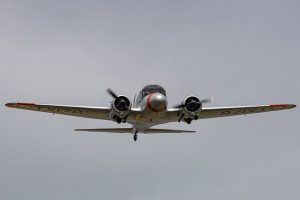
Flight test instrumentation plays an important role in the development of new types of aircraft. To earn their certification, new airplanes must undergo testing. Flight test instrumentation is a part of this testing process. What is flight test instrumentation exactly, and how does it help aircraft engineers with testing?
Overview of Flight Test Instrumentation
Flight test instrumentation is a system of sensors and equipment installed on airplanes. Its purpose is to collect data during test flights.
The Federal Aviation Administration (FAA) requires new aircraft designs to undergo testing. Different types of aircraft have different testing requirements. Flight test instrumentation is designed to collect the necessary data for the required certification during test flights.
The Importance of Flight Test Instrumentation
Without flight test instrumentation, engineers wouldn’t be able to develop new types of aircraft — at least not without meeting the FAA’s requirements. As previously mentioned, the FAA requires new aircraft designs to undergo testing. Flight test instrumentation consists of sensors and other equipment to collect data during these test flights.
Flight test instrumentation helps engineers identify and understand problems with new airplanes in real-world conditions. Engineers often use computer programs to simulate flights, but there’s no substitution for actual test flights. With flight test instrumentation, engineers can evaluate test flight data to ensure the airplane is safe, reliable and performs as expected.
Components of Flight Test Instrumentation
Flight test instrumentation consists of several components, one of which is sensors. Sensors, such as transducers, are placed in various locations of the airplane. They are designed to measure flight-related elements, such as airspeed, altitude, temperature, pressure, acceleration and structural strain.
In addition to sensors, flight test instrumentation includes a data acquisition system (DAS). This is essentially the brain of a flight test instrumentation system. While the sensors collect data, the DAS converts it. The DAS takes the data from the sensors and turns it into a digital format. Once in a digital format, the DAS will then either send the data to a remote location or store it locally.
Some flight test instrumentation systems have telemetry equipment. Telemetry equipment is designed to send data to ground crews in real-time. The ground crews will monitor the flight as they receive and analyze the data.
Cameras and video recorders may also be included in flight test instrumentation systems. They record critical parts of the airplane during test flights. Once a test flight is complete, engineers can review the footage.



